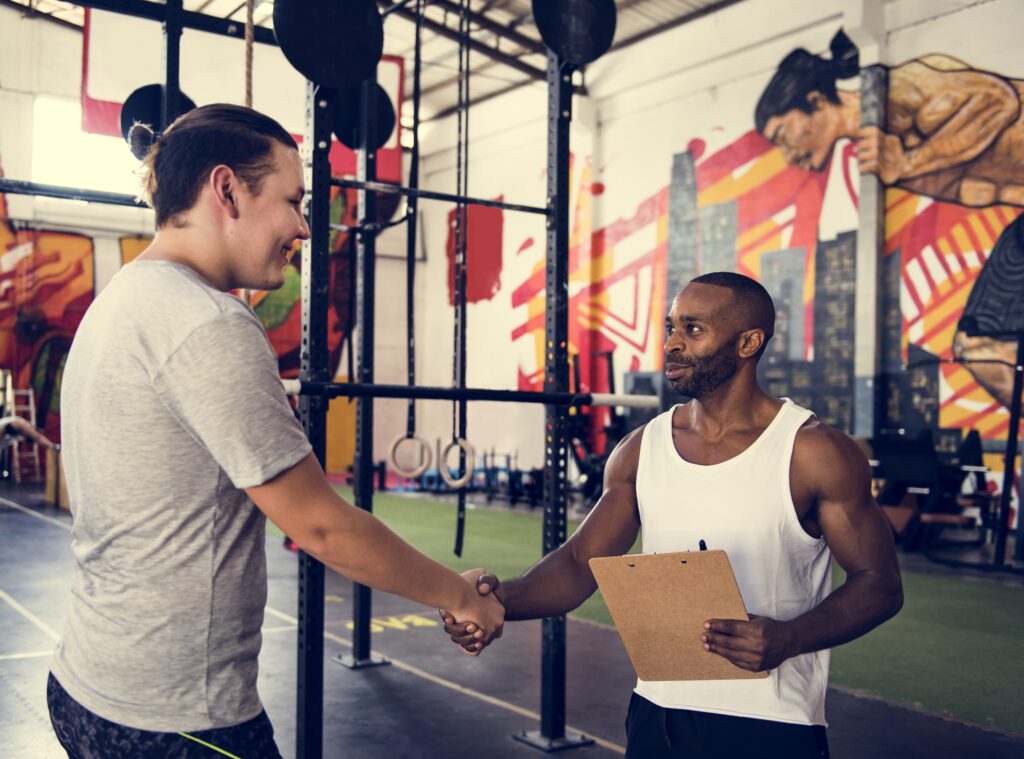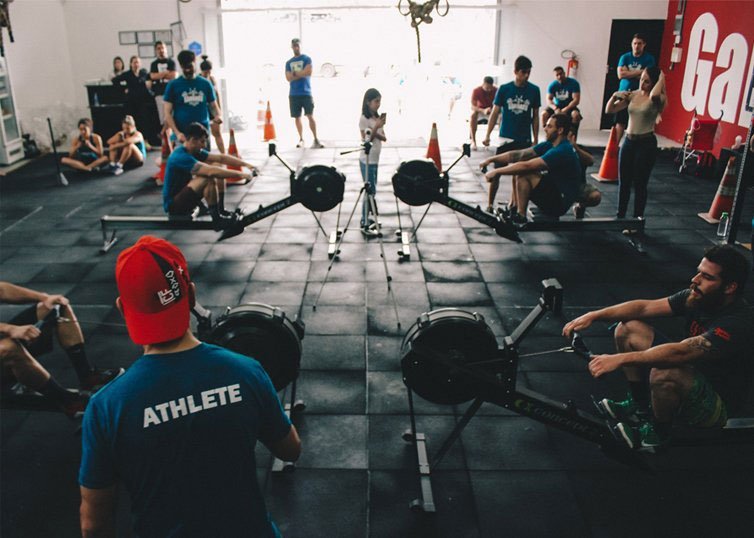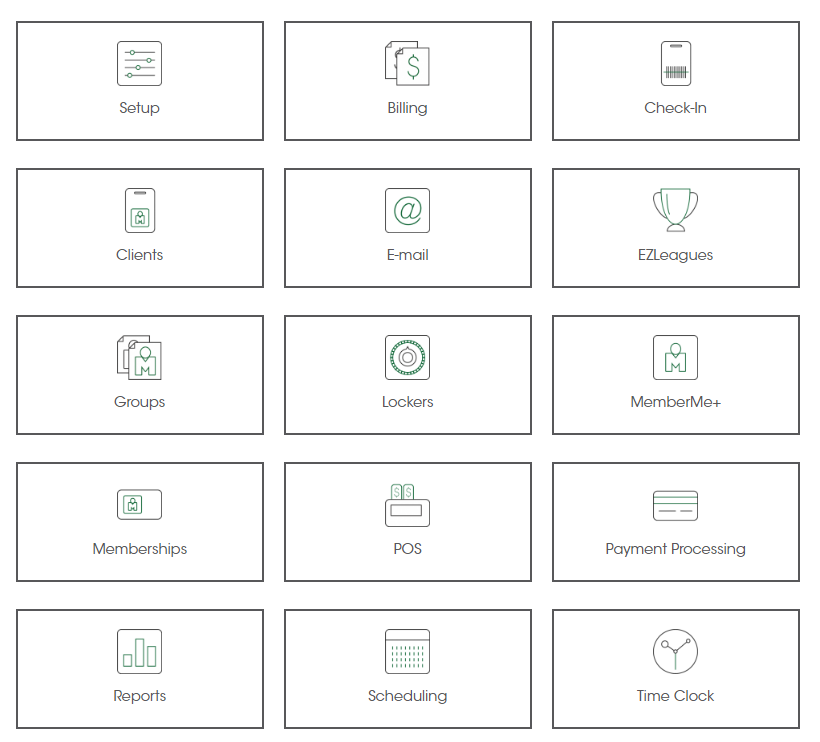Opening a gym in the UK takes more than high-quality equipment and a great instructor team. Behind the scenes, you must navigate business laws, health and safety regulations, data protection duties and more. Meeting these requirements early will protect your staff, safeguard your members and build a reputable, sustainable fitness business.
The UK gym sector is growing strongly. According to the ukactive 2025 Market Report, the UK health and fitness market now serves around 11.5 million members and delivers over £5.7 billion in annual revenue.
We’ve put together this guide to help translate UK legislation into clear, practical steps that gym operators can follow. You’ll find explanations of each legal requirement, what it means for your gym, and how to meet it, no law degree required.
Once your compliance is in place, you’ll be free to focus on scaling your offer, retaining members and building a high-performing business. With the legal foundations secure, growth becomes far easier to manage.
Jump to:
- Why Legal Compliance Matters for UK Gyms
- Step 1 – Register and Structure Your Gym Business
- Step 2 – Secure the Necessary Licences and Permissions
- Step 3 – Meet UK Health and Safety Regulations
- Step 4 – Understand Employment Law and Staff Responsibilities
- Step 5 – Protect Member and Staff Data (GDPR Compliance)
- Step 6 – Draft and Review Legal Contracts
- Step 7 – Get the Right Insurance for Your Gym
- Step 8 – Accessibility and Equality Compliance
- Step 9 – Stay Compliant: Ongoing Checks, Renewals, and Recordkeeping
- Step 10 – Common Legal Mistakes Gym Owners Make
- Gym Legal Compliance Checklist (Quick Reference)
- Gym Legal Requirements FAQs
- Building a Safe, Compliant and Scalable Gym
Why Legal Compliance Matters for UK Gyms
Running a gym in the UK involves more than creating a great fitness space. Every operator also has a legal responsibility to keep members and staff safe, follow the right regulations, and maintain professional standards.
Meeting these obligations builds credibility, prevents costly mistakes, and ensures your business operates on solid legal ground.
Legal Compliance Builds Trust and Protects Your Business
A legally compliant gym is safer, more credible, and more resilient. Compliance supports every part of your operations, from safety and insurance to member confidence and reputation.
- Safety and wellbeing: Meeting standards set by the Health and Safety Executive (HSE) helps prevent accidents, injuries, and costly investigations.
- Reputation and trust: Members and investors are far more likely to commit to a gym that follows the law and prioritises member safety.
- Financial protection: Many insurance providers require proof of compliance before covering accidents or claims.
The Main UK Frameworks Gyms Must Navigate
Gyms in the UK operate under several overlapping legal and regulatory frameworks. The most important include:
- HSE: Health and Safety at Work etc. Act 1974 and related guidance for fitness environments.
- Equality Act 2010: Ensures gyms are inclusive and accessible for all members.
- GDPR and the Data Protection Act 2018: Protects personal and biometric data.
- Financial Conduct Authority (FCA): Regulates gyms offering finance or instalment payment options.
- PPL PRS: Covers music licensing for public performance.
- Local councils: Manage planning permission, food hygiene, and building safety compliance.
Understanding these frameworks early helps you avoid penalties, protect your staff and members, and build a gym that investors and insurers trust.

Step 1 – Register and Structure Your Gym Business
Before you open your doors, your gym needs to be legally registered and structured correctly. This first step lays the groundwork for compliance with tax, planning, and insurance requirements.
Choose the Right Business Structure
How you register your gym affects your tax obligations, liability, and future growth options. The three main structures in the UK are:
- Sole Trader: Easiest to set up and ideal for personal trainers or small studios. You run the business as an individual and pay tax through self-assessment.
- Partnership: Suitable if two or more people share ownership. Profits and responsibilities are divided according to your partnership agreement.
- Limited Company: A separate legal entity registered with Companies House. This structure protects your personal assets, can improve credibility with lenders, and allows you to pay corporation tax instead of income tax.
If you’re unsure which option is best, the HMRC guide on business structures explains the pros and cons in more detail.
Register Your Business
Once you’ve chosen your structure, you’ll need to register it officially:
- Limited companies: Register through Companies House, providing a business name, address, and details of directors.
- Sole traders and partnerships: Register with HMRC for self-assessment to report income and pay tax.
Make sure your business name isn’t already in use by checking the Companies House name availability tool. You can also protect your brand by registering a trademark with the Intellectual Property Office (IPO).
Secure Planning Permission or Change of Use
If your gym occupies a new or converted building, you may need planning permission or change-of-use consent from your local council.
Most gyms fall under Class E (Commercial, Business and Service) use, but conversions, for example, turning a warehouse or retail unit into a gym, often require approval first. You can confirm your building’s current classification on your local authority website or through the Planning Portal.
Ignoring planning consent can lead to fines or forced closure, so it’s important to confirm approval before signing a lease or investing in fit-outs.
Arrange Insurance and Early Registrations
Several types of insurance are mandatory or strongly recommended before trading. At a minimum, register for:
- Employers’ liability insurance: A legal requirement if you employ staff, under the Employers’ Liability (Compulsory Insurance) Act 1969.
- Public liability insurance: Covers injuries or damage to members, visitors, or third parties.
- Professional indemnity insurance: Protects against claims related to training advice or fitness instruction.
Choose a provider authorised by the Financial Conduct Authority (FCA) and check that your cover extends to all gym activities, including classes, equipment use, and events.
Having the right structure and insurance in place early gives your gym a strong legal foundation and helps you trade with confidence.
Step 2 – Secure the Necessary Licences and Permissions
Before your gym can officially open, you’ll need to secure several key licences and permissions. These ensure your business operates legally and safely from day one. Many of them are simple to apply for but essential to staying compliant.
Music Licences (PPL PRS)
If you play music in your gym, even through a radio, TV, or streaming service, you’ll need a PPL PRS licence. This licence covers the rights of artists and producers whose music you use for background playlists or exercise-to-music classes.
Without this licence, your business could face fines or legal action. Fees are based on your facility size and music usage, and renewals are typically annual. You can apply directly through the PPL PRS website.
Food and Drink Handling
If your gym serves food, protein shakes, or coffee, you must register with your local council under the Food Hygiene Regulations. Registration is free, but it must be completed at least 28 days before you start trading.
Even basic snack bars or juice counters fall under these rules. Councils will inspect your site to ensure hygiene and storage standards are met. Most food registrations and inspections are reviewed every 12 to 24 months, depending on your rating.

Childcare, Pool, or Spa Facilities
If your gym offers additional services such as a crèche, swimming pool, or spa, extra permits are required:
- Childcare facilities: Must be registered with Ofsted if you care for children under eight years old.
- Swimming pools and spas: May require local authority health inspections and water safety certifications. Always check with your local Environmental Health department for specific requirements.
These checks help maintain high standards of safety and hygiene for members and staff alike.
Data Registration (ICO)
If you collect or store member data, such as health details, contact information, or payment records, you are legally required to register with the Information Commissioner’s Office (ICO).
This registration confirms that your gym complies with the UK GDPR and Data Protection Act 2018. The ICO will ask for details about the data you handle, your security measures, and your business type. The registration fee starts at around £40 per year for most small businesses.
Failing to register can result in fines and loss of trust, so it’s a crucial step for any fitness business handling personal or health-related information.
Keep on Top of Renewals
Many licences renew annually or every two years, depending on your services. Create a simple reminder system, even a digital calendar or spreadsheet, to ensure you never miss a renewal date. Staying proactive prevents accidental lapses that could disrupt operations or invalidate insurance coverage.
Step 3 – Meet UK Health and Safety Regulations
Health and safety law protects everyone who enters your gym – staff, members, and visitors. Following these regulations isn’t just about avoiding fines or inspections; it’s about creating a safe, professional environment that builds long-term trust and reduces the risk of accidents.
Your Legal Duties Under UK Law
All gym owners in the UK have a legal duty to protect the health, safety, and welfare of anyone affected by their operations under the Health and Safety at Work etc. Act 1974.
The Health and Safety Executive (HSE) oversees enforcement and provides clear guidance for fitness facilities. As an employer or business owner, you must:
- Identify potential hazards and take reasonable steps to reduce them.
- Provide safe equipment, facilities, and systems of work.
- Train staff to work safely and respond to emergencies.
- Maintain clean, hazard-free environments for staff and members.
If an incident does occur, you may also have to report it under RIDDOR (Reporting of Injuries, Diseases and Dangerous Occurrences Regulations 2013).
Conduct and Document Risk Assessments
Risk assessments are the cornerstone of health and safety compliance. They help you identify what could cause harm and record how you plan to manage those risks.
Every gym should complete and regularly update risk assessments covering:
- Equipment safety – inspect machines, free weights, and fixtures for wear or faults.
- Fire safety – check alarms, extinguishers, and evacuation routes.
- Cleanliness and hygiene – monitor changing rooms, saunas, and shared equipment.
- Slips and trips – ensure flooring and walkways are in good condition.
Keep written copies of all risk assessments, and review them at least once a year or whenever significant changes occur (for example, after equipment upgrades or layout changes).

Train Staff and Schedule Regular Maintenance
Your team plays a central role in maintaining a safe gym. All staff, from receptionists to trainers, should receive:
- Induction training on emergency procedures and safe equipment use.
- Refresher sessions on cleaning protocols, first aid, and accident reporting.
- Role-specific training for anyone supervising group sessions or high-risk activities.
Create a simple maintenance schedule that logs equipment checks and cleaning routines. Keeping these records not only improves safety but also demonstrates compliance during inspections.
Accessibility and Equality Compliance
Under the Equality Act 2010, gyms must make “reasonable adjustments” so people with disabilities can use their facilities. This might include:
- Installing ramps or automatic doors.
- Providing clear signage and wide walkways.
- Ensuring accessible changing rooms and adapted machines.
Compliance with this act is a legal requirement, and it also strengthens your reputation as an inclusive and welcoming space.
Display Your Health and Safety Policy
If your gym employs five or more people, you must have a written health and safety policy and display it clearly onsite. The policy should outline who is responsible for safety, how you manage risks, and what staff should do in an emergency.
You can download free templates and examples from the HSE website.
Practical Tip: Maintain an Incident Log
Keep an incident log for accidents, near misses, and equipment faults. Record what happened, when, and how it was resolved. This not only helps prevent repeat issues but also provides valuable evidence if an inspection or insurance claim occurs.
Step 4 – Understand Employment Law and Staff Responsibilities
Hiring the right team is one of the most rewarding parts of running a gym, but it also comes with legal obligations. Employment law in the UK protects staff and ensures every workplace operates fairly and safely.
Following the right procedures from the start will help you avoid disputes, fines, or reputational damage later on.
Provide Written Contracts
Every employee and contractor working at your gym must have a written contract. This is a legal requirement and must be provided on or before their first working day.
Your contract should clearly set out:
- Job title and duties
- Working hours and pay
- Holiday entitlement
- Notice periods
- Health and safety responsibilities
- Codes of conduct or professional standards
You can find free templates and advice from ACAS (Advisory, Conciliation and Arbitration Service), which offers guidance for small employers.
For freelance personal trainers or class instructors, create a separate contractor agreement that defines the relationship clearly. This prevents confusion about tax, insurance, and liability.

Register for PAYE and Pension Auto-Enrolment
If you employ staff, you must register with HMRC as an employer and set up Pay As You Earn (PAYE). This system ensures that income tax and National Insurance contributions are paid correctly.
You’ll also need to set up workplace pensions under the Pensions Act 2008. Every eligible employee must be automatically enrolled, and you must contribute to their pension fund.
Failing to register or make contributions can lead to financial penalties, so it’s best to complete this step before your first hire.
Verify Right to Work and Carry Out Employment Checks
Before anyone starts work, you must confirm that they have the legal right to work in the UK. Keep copies of relevant documents such as passports or biometric residence permits. You can check documents online using the official Right to Work Checking Service.
If your gym hires staff who work with children, vulnerable adults, or operate in roles requiring trust (for example, childcare or swimming lessons), you may also need a DBS check (Disclosure and Barring Service).
Deliver Training and Promote Equal Opportunities
Every staff member should complete a safety induction covering emergency procedures, equipment handling, and cleaning standards. Regular refresher sessions reinforce good habits and demonstrate compliance with your health and safety policy.
Under the Equality Act 2010, you must also provide equal opportunities training. This ensures all staff treat members fairly, regardless of gender, age, disability, or background. Inclusive practices protect your business and help create a welcoming environment for all.
Define Freelancers and Employees Clearly
Many gyms work with a mix of employed staff and freelance personal trainers. It’s vital to classify each correctly:
- Employees work under your direction, have set hours, and are paid a salary or hourly wage. They receive benefits like holiday pay and pensions.
- Freelancers or contractors manage their own clients, set their own schedules, and pay their own tax.
Misclassifying a worker can result in tax penalties from HMRC and employment disputes. When in doubt, use the HMRC employment status checker to confirm how someone should be classified.
Step 5 – Protect Member and Staff Data (GDPR Compliance)
Once your gym is registered with the appropriate authorities, the next step is maintaining strong data protection practices every day. The UK GDPR and Data Protection Act 2018 require gyms to handle personal, health, and biometric information securely and fairly.
Good data management protects your members’ privacy, keeps your reputation strong, and ensures your gym stays compliant during audits or inspections.
Create and Display a Privacy Policy
A privacy policy explains what data you collect, why you collect it, and how it’s stored or shared. It should cover:
- Member and staff information (name, contact, payment, and health data).
- How long you keep the data and how it’s deleted.
- Contact details for data queries or complaints.
Keep this policy visible on your website and at reception so members know their rights and how their data is handled.
Gain Consent for Health and Biometric Data
If your gym records sensitive information, for example, heart-rate tracking, medical notes, or fingerprint entry systems, you must gain written, explicit consent from each member.
Consent must be clear and separate from general terms and conditions, written in plain language, and easy to withdraw at any time.
Keep Data Secure
Protecting information is an ongoing process, not a one-off task. Use a mix of digital and physical safeguards such as:
- Password-protected systems and secure logins.
- Locked cabinets for paper files.
- Regular updates to antivirus and security software.
- Limited access so only authorised staff can view personal data.
If you use booking or membership software, confirm it meets UK GDPR standards and stores data in approved regions.
Train Staff and Plan for Incidents
Everyone who handles data should understand how to keep it safe. Provide short, regular training on password hygiene, safe sharing, and spotting scams.
If data is lost, stolen, or accessed without permission, log the details immediately and investigate. Report serious breaches to the Information Commissioner’s Office (ICO) within 72 hours. Keeping an incident log demonstrates responsibility and transparency.
Honour Member Rights
Members have clear legal rights over their personal data. Your team should be able to respond to requests for:
- Access – a copy of their personal information.
- Correction – fixing inaccurate details.
- Deletion – removing data that’s no longer needed.
- Restriction or portability – limiting how their information is used or shared.
Respond promptly to these requests and keep records of any action taken.

Step 6 – Draft and Review Legal Contracts
Clear, fair contracts protect your business, your team, and your members. They prevent disputes, strengthen trust, and ensure everyone understands their rights and responsibilities. Every gym in the UK should have a set of written agreements that comply with consumer and employment law.
Membership Agreements
A well-written membership agreement sets expectations and reduces the risk of complaints or cancellations. It should clearly outline:
- Membership options and pricing. Explain all plans, durations, and renewal terms in plain language.
- Cancellation and refund policies. State how and when members can end their contract, and any notice period required.
- Liability clauses. Clarify what your gym is responsible for, and what members agree to when using facilities or equipment.
Under the Consumer Rights Act 2015, contracts must be fair, transparent, and easy to understand. Unclear or misleading terms could be considered unenforceable. The Competition and Markets Authority (CMA) provides guidance on what counts as fair practice for gyms and leisure facilities.
Review membership documents regularly to ensure they reflect current pricing, services, and consumer law updates.
Staff Contracts
Employment contracts protect both your business and your staff. See the section above for more details on this.
Supplier and Service Agreements
Your gym likely depends on multiple external partners, from equipment suppliers to cleaning companies and maintenance contractors. These relationships should be backed by written supplier agreements that define:
- Service expectations and frequency.
- Delivery and installation terms.
- Payment schedules and cancellation rights.
- Responsibilities for damage, delays, or repairs.
Well-structured contracts make it easier to resolve disputes and maintain consistent service standards.
Waivers and Disclaimers
Many gyms ask members to sign waivers for specific activities, such as group classes or personal training sessions. These can help limit liability, but they must be fair and transparent to be valid.
Avoid overly broad or confusing language. A waiver cannot remove your legal responsibility to provide safe equipment and facilities. To stay compliant with civil law and consumer protection standards, have your waivers reviewed by a solicitor or legal advisor familiar with the fitness sector.
Review Contracts Regularly
Contracts should never stay static. Review all agreements, membership, employment, and supplier, at least once a year or when you update services, pricing, or business structure. A short annual review ensures your documents stay legally sound and reflect the way your gym actually operates.
Step 7 – Get the Right Insurance for Your Gym
Insurance is one of the most important safeguards your gym can have. It protects your business from financial loss, legal claims, and unexpected events. The right cover ensures that, if something goes wrong, you can recover quickly and continue operating with confidence.
Employers’ Liability Insurance (Mandatory)
If your gym employs staff, even part-time or temporary workers, you are legally required to hold employers’ liability insurance under the Employers’ Liability (Compulsory Insurance) Act 1969.
This policy protects you if an employee becomes injured or ill as a result of their work. You must display your insurance certificate somewhere visible on-site and keep records of your policy details for at least 40 years.
Failing to have this cover can result in fines of up to £2,500 per day until you comply.
Public Liability Insurance (Strongly Recommended)
Public liability insurance protects your gym if a member, visitor, or contractor is injured on your premises or if their property is damaged.
Claims of this nature can be expensive, even for minor accidents. Having this cover shows your business takes safety seriously and reassures both members and landlords that you’re prepared for unforeseen events.
Professional Indemnity Insurance
If your gym or trainers provide personalised fitness plans, coaching, or nutrition advice, professional indemnity insurance is essential. It covers claims of negligence or misinformation that may result in injury or financial loss.
Even when trainers act responsibly, clients may still make complaints or seek compensation, so this cover provides vital legal and financial protection.
Equipment and Business Interruption Insurance
Fitness equipment is a major investment. Gym equipment insurance covers damage, theft, or breakdown of machines, weights, and other assets. Some policies even include temporary replacement equipment, helping you stay open during repairs.
Business interruption insurance goes a step further, covering lost income if your gym must close temporarily due to fire, flooding, or other disruptions. It ensures you can keep paying staff and bills while you recover.
Optional Add-ons
Depending on your gym’s setup, additional policies can provide extra protection:
- Personal accident cover: Protects staff or self-employed trainers in case of injury.
- Cyber insurance: Covers costs related to data breaches, ransomware, or online fraud, particularly important if you store member information digitally.
When comparing policies, check that your provider is authorised by the Financial Conduct Authority (FCA) and that your coverage includes all key business activities, such as classes, events, and outdoor sessions.
Compliance and Claim Validity
Insurance works hand in hand with compliance. If your gym fails to meet basic legal standards, such as maintaining equipment, completing risk assessments, or adhering to Health and Safety Executive (HSE) guidance, insurers can refuse to pay out.
Keeping your policies current and maintaining accurate safety documentation ensures every claim remains valid and straightforward to process.

Step 8 – Accessibility and Equality Compliance
An inclusive gym isn’t only good business practice, it’s a legal requirement. Under the Equality Act 2010, all UK gyms must make reasonable adjustments so that people with disabilities can access and use their facilities without disadvantage.
Compliance goes beyond physical access. It includes staff training, communication, and how you design your member experience from start to finish.
Meet Legal Obligations Under the Equality Act 2010
The Equality Act requires businesses to identify and remove barriers that prevent people with disabilities from using their services. For gyms, this means reviewing your facilities, processes, and communication methods regularly.
The Equality and Human Rights Commission (EHRC) defines “reasonable adjustments” as practical changes that make your services accessible without causing disproportionate cost or disruption. These can include physical modifications, policy updates, or alternative service options.
Examples of Reasonable Adjustments for Gyms
Common examples that help ensure compliance and improve accessibility include:
- Wheelchair access: Ramps, wide doorways, and step-free routes to main areas.
- Signage: Large, high-contrast signs and clear wayfinding throughout the facility.
- Locker rooms and restrooms: At least one accessible changing area with appropriate privacy and space.
- Accessible equipment: Machines with adjustable settings or specialised designs for seated or one-handed use.
- Lighting and acoustics: Well-lit spaces and reduced echo for members with sensory sensitivities.
When designing new spaces or upgrading equipment, include accessibility in your planning from the start. It is far more cost-effective to design for inclusion than to retrofit later.
Train Staff to Support Every Member
Inclusivity depends on attitude as much as infrastructure. All staff should receive regular training on how to assist members with physical or sensory disabilities respectfully and confidently.
Training can cover:
- Communicating effectively with people who have visual or hearing impairments.
- Offering appropriate assistance without making assumptions.
- Maintaining awareness of hidden disabilities.
Good communication and empathy are essential to creating a gym environment where every member feels valued and welcome.
Conduct Accessibility Audits
Carry out an accessibility audit at least once a year, or whenever you make changes to your layout, facilities, or equipment. The audit should document:
- Physical accessibility (entrances, routes, and signage).
- Equipment accessibility and maintenance.
- Staff awareness and inclusion policies.
- Feedback from members with disabilities.
Keep written records of your audits and any actions taken. These demonstrate ongoing compliance and a proactive approach to equality during inspections or landlord reviews.

Step 9 – Stay Compliant: Ongoing Checks, Renewals, and Recordkeeping
Legal compliance doesn’t end once your gym opens. Licences, insurance policies, and safety procedures all need to be maintained and reviewed regularly. Keeping up with renewals and documentation helps prevent fines, insurance issues, and unnecessary disruptions.
A simple system for tracking updates can save you hours of admin and give you confidence that your business is always operating legally.
Keep Track of Renewal Dates
Most gyms manage multiple documents with different expiry cycles. Create a clear list of renewal dates for:
- Licences: PPL/PRS, food hygiene, childcare or pool permits (usually annual or biannual).
- Insurance: Public liability, employers’ liability, and equipment cover (typically renewed annually).
- Safety documentation: Fire and risk assessments (review at least once a year or when major changes occur).
A calendar reminder or digital tracking tool ensures you never miss a renewal deadline. Even a short lapse could leave your gym uninsured or operating without a valid licence.
Prepare for Inspections and Audits
Inspections from local councils, the Health and Safety Executive (HSE), or the Information Commissioner’s Office (ICO) can occur with little notice. Staying prepared makes them quick and stress-free.
Keep inspection-related files organised and easy to access, including:
- Risk assessments and maintenance logs.
- Health and safety and equality policies.
- Cleaning schedules and staff training records.
- Data protection and privacy documentation.
Regularly updating these materials shows that your gym is committed to safety, fairness, and transparency.
Review and Update Your Policies
Policies should evolve as your gym grows. Review key documents at least once a year, or sooner if regulations change. A typical policy review checklist should include:
- Health and Safety Policy: Covers responsibilities, procedures, and incident reporting.
- Data Protection Policy: Reflects current GDPR and ICO guidance.
- Equality and Accessibility Policy: Ensures compliance with the Equality Act 2010.
- Staff Handbook: Includes employment policies, conduct expectations, and grievance procedures.
Regular reviews help keep your team informed and prevent outdated procedures from slipping through the cracks.
Follow Recordkeeping Best Practices
Good recordkeeping protects your business if you ever face an audit, complaint, or insurance claim. Store the following securely, either digitally or in paper form:
- Risk assessments, inspection reports, and training records.
- Accident or injury logs.
- Insurance certificates and renewal confirmations.
- Payroll, tax, and registration documents for HMRC.
Keep most records for at least three years, and retain accident or injury-related documents for longer in case of future claims.
Create a Compliance Calendar
A simple “compliance calendar” can keep all legal deadlines in one place. Use a spreadsheet or digital reminder system to log due dates for renewals, audits, and training.
For a more efficient approach, consider using gym management software. It helps centralise important business information, manage staff schedules, and maintain clear operational records, making it easier to stay organised and demonstrate compliance when needed.
Step 10 – Common Legal Mistakes Gym Owners Make
Even the most diligent gym owners can miss key legal details. These common mistakes are easy to overlook but can lead to serious issues, from fines and lost insurance coverage to reputational damage. Use this list as a quick reference to keep your operations compliant and protected.
- Failing to register with the ICO: Any gym collecting member or staff data must be registered with the Information Commissioner’s Office.
- Using unclear or unenforceable membership contracts: All contracts must comply with the Consumer Rights Act 2015 and follow fair terms guidance from the Competition and Markets Authority.
- Skipping regular equipment inspections: Broken or unsafe equipment breaches Health and Safety Executive (HSE) requirements and can invalidate insurance claims.
- Playing music without a PPL PRS licence: A licence is required for any public music use, including background playlists or group fitness classes.
- Ignoring accessibility duties: Failing to make reasonable adjustments under the Equality Act 2010 can lead to discrimination claims.
- Not updating safety risk assessments or training: Risk assessments should be reviewed annually or after significant changes to your facility or staff.
- Letting insurance policies lapse: Missing a renewal deadline could leave your gym unprotected against claims, injuries, or property damage.
Keeping on top of these details builds a safer, more professional, and legally sound fitness business.

Gym Legal Compliance Checklist (Quick Reference)
Keep this checklist handy to ensure your gym stays fully compliant year-round.
| Category | Requirement | Status |
| Registration | Companies House / HMRC | ✅ |
| Licences | PPL PRS / Food Hygiene | ✅ |
| Insurance | Employers’ Liability / Public Liability | ✅ |
| Safety | HSE Risk Assessment / Accessibility Audit | ✅ |
| Data Protection | ICO Registration / Privacy Policy | ✅ |
| Contracts | Membership / Supplier / Staff | ✅ |
| Ongoing | Annual Renewals / Recordkeeping | ✅ |
Completing these checks once isn’t enough. Revisit them regularly to keep your gym safe, legal, and ready for growth.
Gym Legal Requirements FAQs
Do I need a licence to play music in my gym?
Yes. You must have a PPL PRS licence for any music played publicly, including background playlists and group exercise classes.
Is insurance mandatory for gyms in the UK?
Employers’ liability insurance is legally required if you employ staff. Public liability insurance isn’t mandatory but is strongly recommended for member and visitor protection.
What are the most common legal risks for gyms?
The most frequent issues involve personal injury claims, data breaches, and disputes over unfair membership contracts or cancellation terms.
How often should I review my gym’s health and safety policy?
Review your policy at least once a year or whenever you make significant changes to your premises, staff, or equipment.
Building a Safe, Compliant and Scalable Gym
Legal compliance is an ongoing commitment that underpins every part of a successful gym business. It protects your members, supports your staff, and ensures your reputation grows with your membership base.
Once your gym is fully compliant, you can shift focus toward growth, improving your gym’s branding, marketing, member retention, and scalability with confidence.
Modern gym management tools such as EZFacility make it easier to stay organised. The platform helps centralise key business information, manage staff schedules, and maintain clear operational records, supporting a more efficient and transparent approach to compliance.
Manage your gym’s operations and compliance in one place. Book a demo today to explore how EZFacility simplifies bookings, memberships, and audits.



















